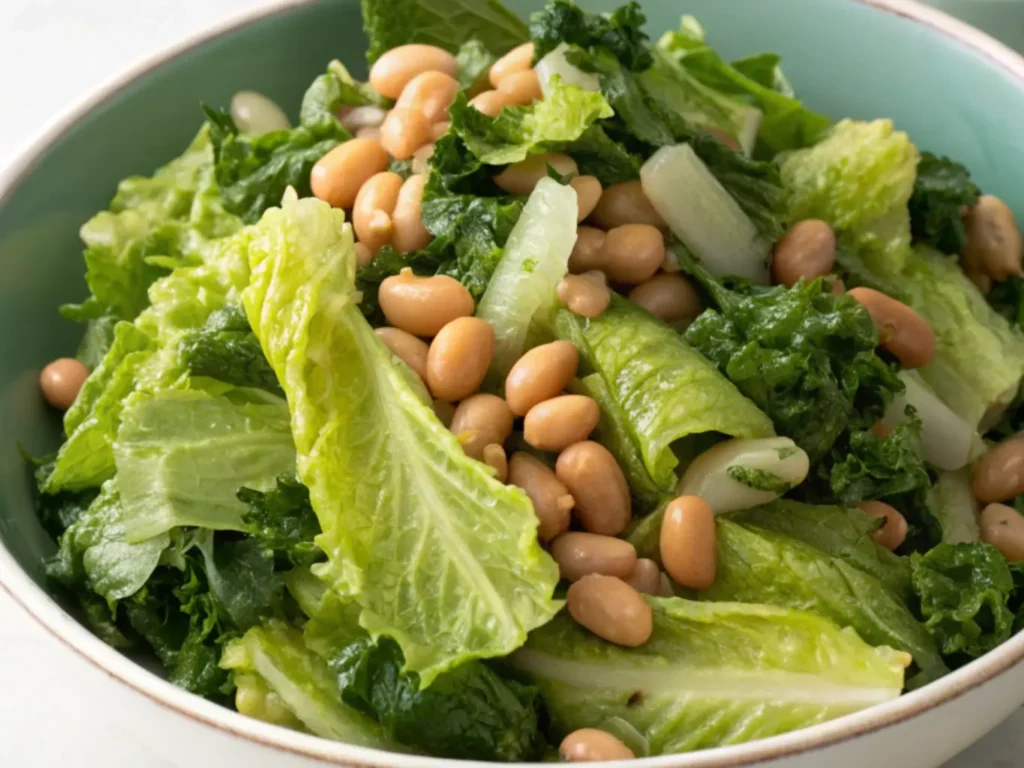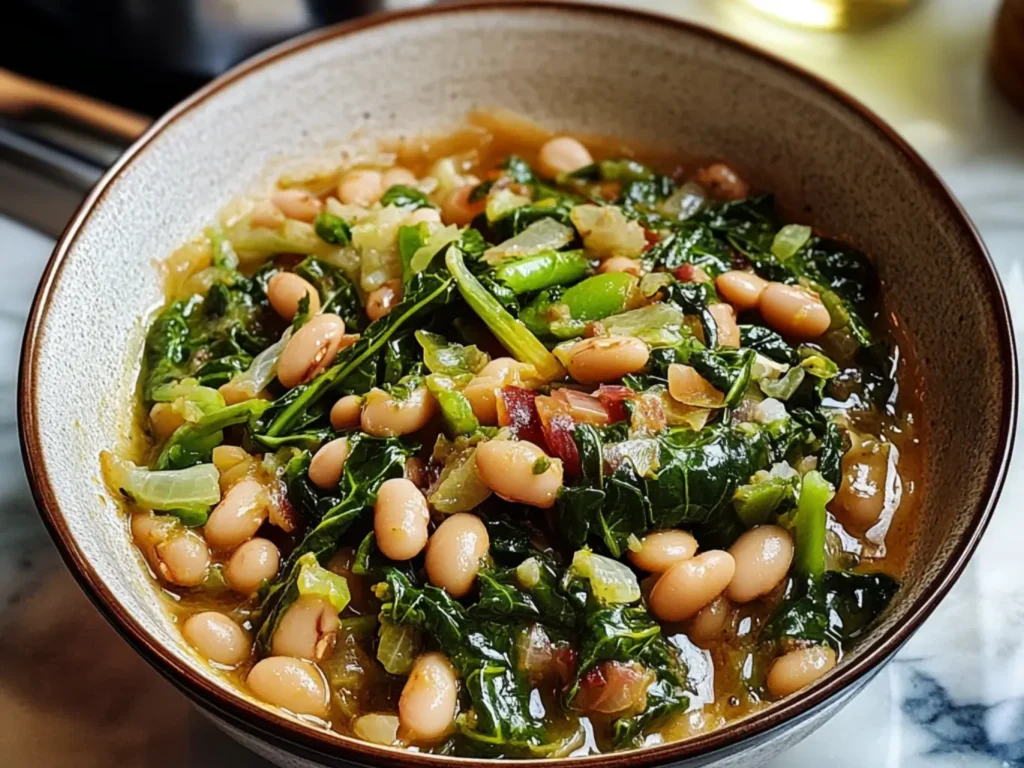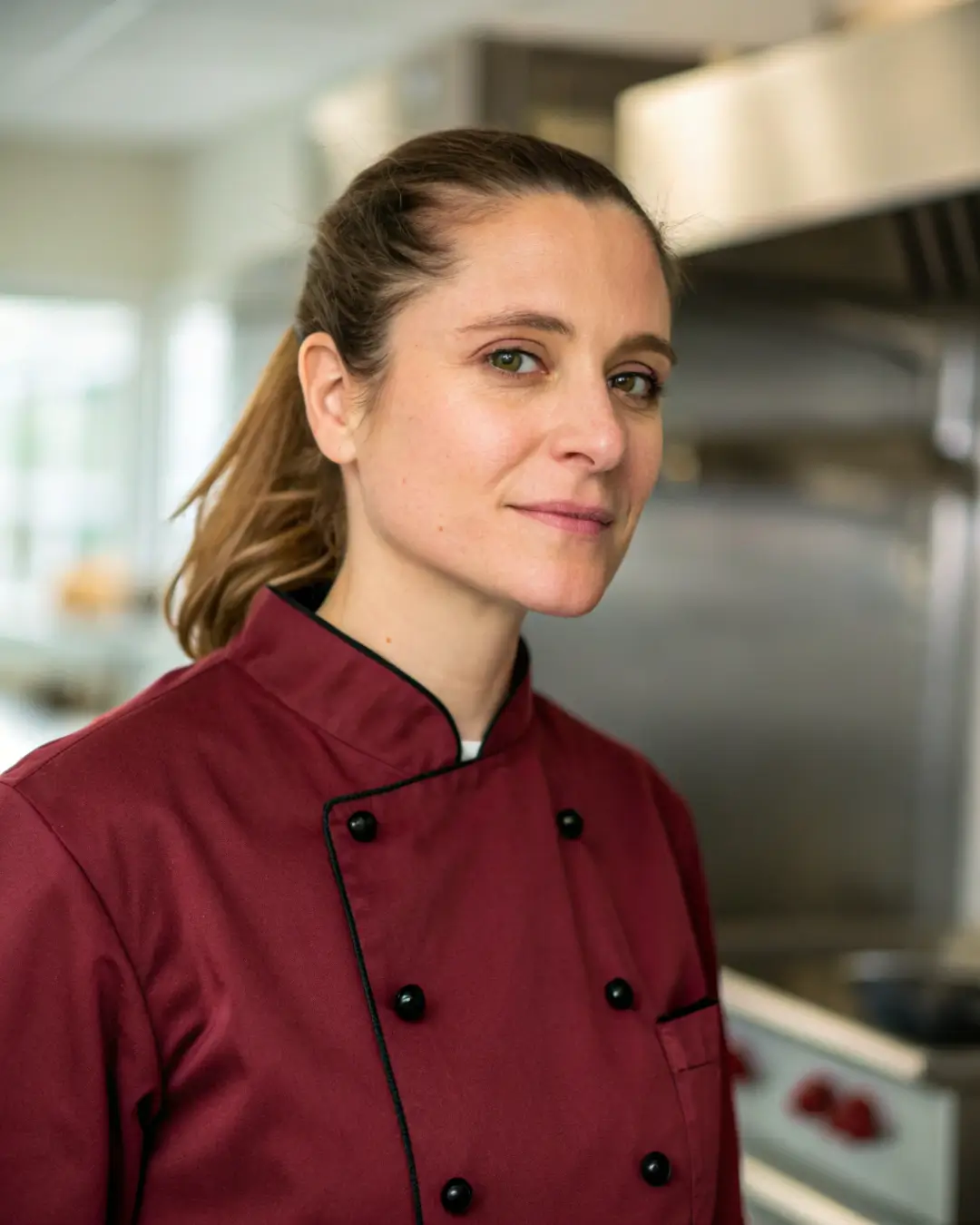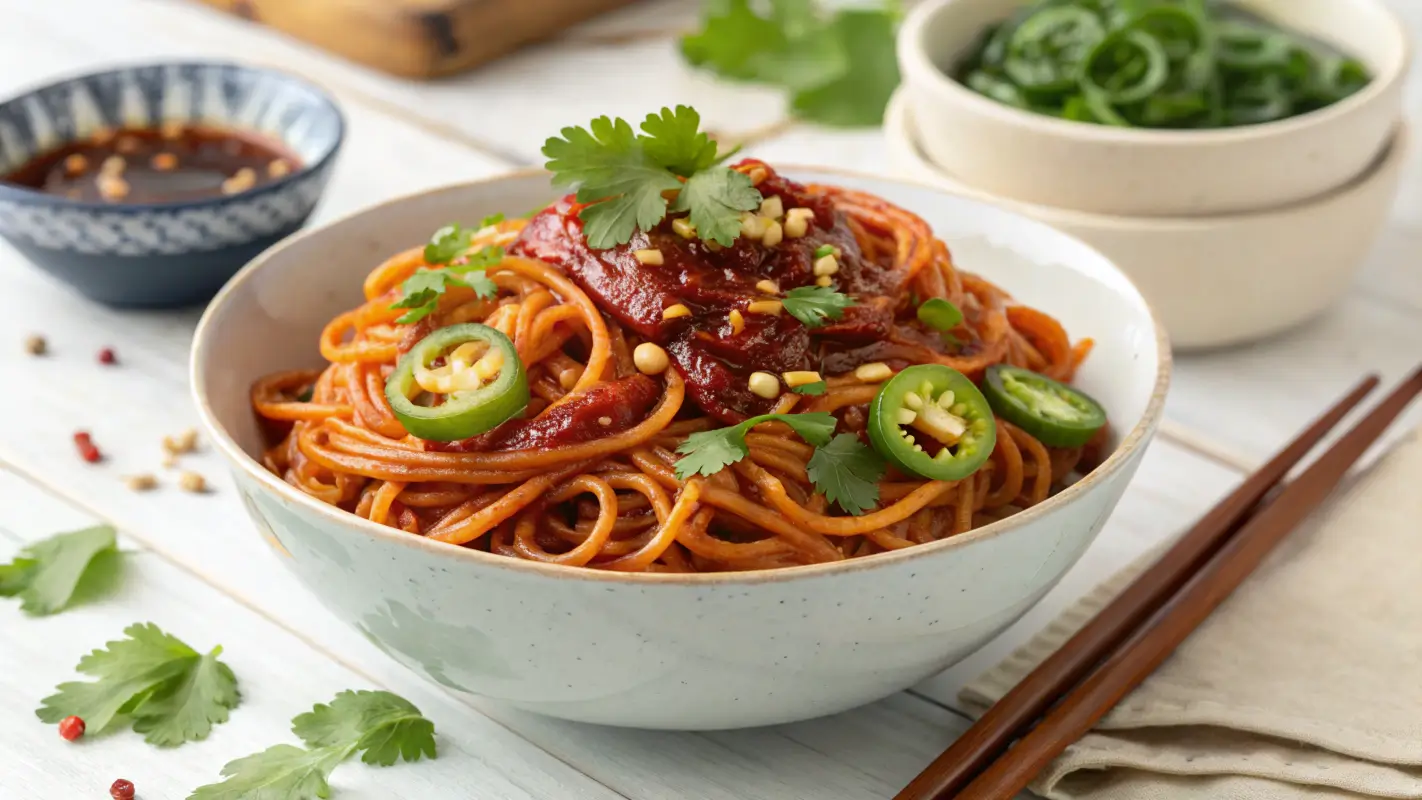Table of Contents
Escarole and beans are a humble but heartwarming dish endured in Italian kitchens through generations. For those chilly evenings when a simple soup is needed or perhaps wanting a substantial addition to the table for a family feast, this dish will always serve a great variety of uses.
There are many ways to make or decorate this ageless dish, some of which have variations. So, while escarole and beans have an extensive historical background from their preparation to the table, they are also incredibly nutritious, which makes them healthful. Some ideas on what to serve with them, how to use them, and how to improve their ubiquitous flavor are a few examples of things that can keep the food world on the edge of its seat regarding any simple but irresistible.
If you’re exploring more hearty dishes, you’ll want to How to thicken up calico beans. It’s a sweet counterpart to the savored sweetness of escarole and beans.
Introduction to Escarole and Beans
What is Escarole and Beans?
Escarole and beans is a classic Italian recipe that combines leafy escarole greens with creamy cannellini beans. The dish is often prepared with garlic, olive oil, and red pepper flakes, creating perfect flavors. It’s versatile enough to be served as a soup, stew, or sautéed side dish. What makes this recipe stand out is its simplicity—it is crafted from pantry staples yet brimming with taste and nutrition.
Traditionally considered a peasant dish, escarole, and beans have found their way into gourmet kitchens and home dining tables. The mild bitterness and earthy flavor of escarole complement the smooth and nutty taste of cannellini beans, making beans a hearty vegetarian meal or an excellent accompaniment to dishes that use meat.
Health Benefits of Escarole and Cannellini Beans
This dish isn’t just about taste. It’s the power isn’t nutrition. In addition, escarole, a type of chicory, contains significant amounts of antioxidants, vitamins A and K, and dietary fiber. These three help keep the digestive system healthy and boost immunity. Cannellini beans are also enriched with plant protein, iron, and potassium, making them a strong health support tool for the heart and energy production inside the body.
Together, these ingredients make escarole and beans a wholesome meal option for anyone looking to enjoy a healthy, satisfying dish. Whether you want to include more greens or explore traditional Italian flavors, this recipe meets all your needs.

History and Tradition of Escarole and Beans
Italian Roots of Escarole and Beans
Escarole and beans have deep roots in southern Italy, where they emerged as a staple in cucina povera, the “cooking of the poor.” This culinary” tradition focused on “simple, inexpensive, nourishing, and flavorful ingredients. Peasant families often grew escarole in their gardens, harvesting it fresh to pair with pantry staples like beans and olive oil. The dish came to represent a kind of resourcefulness in turning meager ingredients into a heart-warming meal. Over time, this humble dish gradually evolved into a much-loved Italian classic, one dished up at home and in trattorias. Its well-known popularity spilled beyond the borders of Italy to fill the tables of Italian-Americans longing for its quintessential comforting simplicity.
Evolution in Modern Cuisine
Even today, escarole and beans are versatile dishes that can be delivered to any kitchen. Chefs have spiced them up by adding sausage or Parmesan to make them more protein-rich and provide that beautiful umami flavor. Escarole has also changed to accommodate modern dietary trends, such as vegetarian dishes and people wanting healthy, plant-based meals.
The enduring allure of escarole and beans is rooted in their capacity to harmonize traditional recipes with modern culinary techniques. Whether presented as an appetizer or a main course, this dish exemplifies the rich legacy of Italian cuisine.
Ingredients and Preparation Techniques
Essential Ingredients for Escarole and Beans
The elegance of this dish lies in its inherent simplicity, requiring only a handful of ingredients to create a flavorful dish. Key components include:
- Escarole: This mildly bitter green adds depth to the dish.
- Cannellini Beans: Creamy and nutty, these beans perfectly match escarole.
- Garlic: Essential for that classic Italian aroma and taste.
- Olive Oil: A staple of Italian cooking, enhances the dish’s richness.
- Red Pepper Flakes: dish’s hint of spice, balancing the other flavors.
Parmesan cheese for that savory touch, and some lemon juice to bring out the flavors. Good ingredients, such as fresh escarole and olive oil, can make all the difference.
Step-by-Step Cooking Process
Here’s how to make this classic dishHere’sst a few easy steps:
- Prepare the Escarole: Wash the escarole thoroughly, as it can be gritty. Chop it into bite-sized pieces.
- Sauté the Garlic: Heat olive oil in a large skillet over medium heat. Add minced garlic and red pepper flakes and cook until fragrant.
- Cook the Escarole: Toss the escarole into the skillet and sauté until it wilts, about 3–5 minutes.
- Add the Beans: Stir the cannellini beans and a cup of vegetable broth. Simmer for 10 minutes, allowing the flavors to meld.
- Season and Serve: Finish with salt, pepper, and a drizzle of olive oil. Serve with crusty bread or as a side dish.
Increasing the broth and letting it simmer longer can make the stew more brothy, lending it a more stew-like texture. This dish is very flexible, so feel free to adapt it.

Popular Variations of Escarole and Beans
Classic Escarole and Beans Soup
If you’re a lover of comfort foods, thiyou’reion of the dish will surely win you over: a soup that’s as good as it gets. It transforms the original recipe into a warm, brothy delight perfect for cool nights. Typically, the soup doesn’t include:
- Additional broth.
- It doesn’t have lemon juice.
- A sprinkle of Parmesan cheese for richness.
To make this version:
- Begin by sautéing garlic and red pepper flakes in olive oil.
- Add chopped escarole, cooking until it wilts.
- Introduce cannellini beans and several cups of vegetable broth.
- Let it simmer for 15–20 minutes, allowing the flavors to meld beautifully.
This hearty soup pairs wonderfully with crusty bread or even over a bed of rice for an extra-filling meal.
Sautéed Escarole with Garlic and Beans
While not quite as heavy, it is equally flavorful when sautéed. This method highlights the natural flavors of the escarole and beans without a brothy base. Here’s how it’s done:
- Heat olive oilHere’sskillit’snd add minced garlic.
- Toss in the escarole, cooking until tender.
- Mix the cannellini beans, seasoning with salt, pepper, and a pinch of red pepper flakes.
This version works as a side dish or a topping for pasta, providing a versatile way to enjoy escarole and beans.
For more delicious recipes, check out this guide to hearty vegetable dishes that pair beautifully with various greens.
Serving and Pairing Suggestions
Best Pairings with Escarole and Beans
It complements various dishes with versatility, escarole, and beans. For instance, it can be a typical meal with Italian favorites such as roasted chicken, meatballs, or pasta. It must always be accompanied by crusty bread, which beautifully absorbs the succulent juices.
For instance, such food might snap at the seemingly Italian-brewed meal involving roast chicken, meatballs, and pasta and then finish with crusty bread to soak up whatever sauce is left. The rich variety of escarole and beans spans various meal applications.
Looking for a vegetarian twist? Pair the dish with quinoa or brown rice to create a protein-packed, plant-based meal. Add a fresh green salad dressed with lemon vinaigrette to balance the richness.
How to Serve for Different Occasions
They are as perfect for a family-style dinner as they are for a simple weeknight swift:
Escarole and beans. Serve it as an appetizer in smaller portions or as the main dish for a cozy, satisfying dinner. Its versatility makes this perfect for anything, from throwing casual lunch get-togethers to celebrating festive parties.
Sprinkle the dish with grated Parmesan, drizzle over high-quality extra virgin olive oil, or garnish with freshly chopped parsley. These additions add flavor and decoration, making this dish even more tempting.
FAQs About Escarole and Beans
Are Escarole and Beans Gluten-Free?
Yes! Escarole and beans are naturally gluten-free, making it an excellent choice for those with gluten sensitivities or celiac disease. Escarole and cannellini beans are gluten-free, and the dish doesn’t require wheat-based ingredients, so it isn’t served alongside bread. Ensure to buy a gluten-free version to complement the meal for gluten-free eaters.
Can I Use Other Types of Beans?
Absolutely! While cannellini beans are traditional, you can easily substitute other beans, such as navy beans, Great Northern beans, or chickpeas. Each type of bean has a unique texture and flavor, so feel free to experiment. If you’re short on canned beans, cooked beans work wonderfully.
How to Store and Reheat Leftovers?
Suppose you have leftovers, escarole, and beans stored well in the fridge for up to three days. To reheat:
To restore its consistency, warm it on the stovetop over medium heat, adding a splash of broth or water.
Use the microwave in 30-second intervals, stirring in between, for a quick option.
Store it in an airtight container to keep it fresh.
Closing Thoughts on Escarole and Beans
Why You Should Try Escarole and Beans Today
Escarole and beans are more than just a dish; they celebrate simple, wholesome ingredients and timeless Italian cooking. Whether having as a soup, a side dish, or the main course, this one is beyond measure in dictionary terms for versatility and flavor. Full of nutrients and packed with the most comforting tastes, this all-time recipe has all the elements required for any occasion. Indeed, why not? One can cook something very nutritious and satisfying with just a few ingredients and a little effort. It will not disappoint you for sure. Gather the ingredients, and enjoy the meal.
For a touch of sweetness to complete your meal, revisit this Delicious Calico Bean or explore more recipes on the site.
Tips for Growing Escarole at Home
Why Grow Escarole?
If you love escarole and beans, why not grow your escarole at home? Escarole is a hardy, leafy green that thrives in various climates, making it a perfect addition to your home garden. Not only does it provide fresh greens for your favorite recipes, but it’s also cost-effective and rewarding.
How to Grow Escarole
- Select the Right Location: Escarole prefers a sunny spot with well-drained soil. Choose a location that receives at least six hours of sunlight daily.
- Prepare the Soil: Ensure the soil is rich in organic matter. Mixing in compost or well-rotted manure before planting will help the plant thrive.
- Plant the Seeds: Sow escarole seeds directly into the soil about ¼ inch deep and 12 inches apart. If you’re starting indoors, transplant you after 4–6 weeks.
- Water Regularly: Keep the soil evenly moist but not soggy. Water escarole deeply once a week, more frequently during dry spells.
- Harvest Wisely: Escarole is ready to harvest when the leaves are about 6–8 inches long. Cut the outer leaves first to encourage continued growth.
Growing your escarole ensures a steady supply of fresh greens to elevate your escarole and bean dishes. Plus, you’ll enjoy the satisfaction of cooyou’llith homegrown ingredients.





